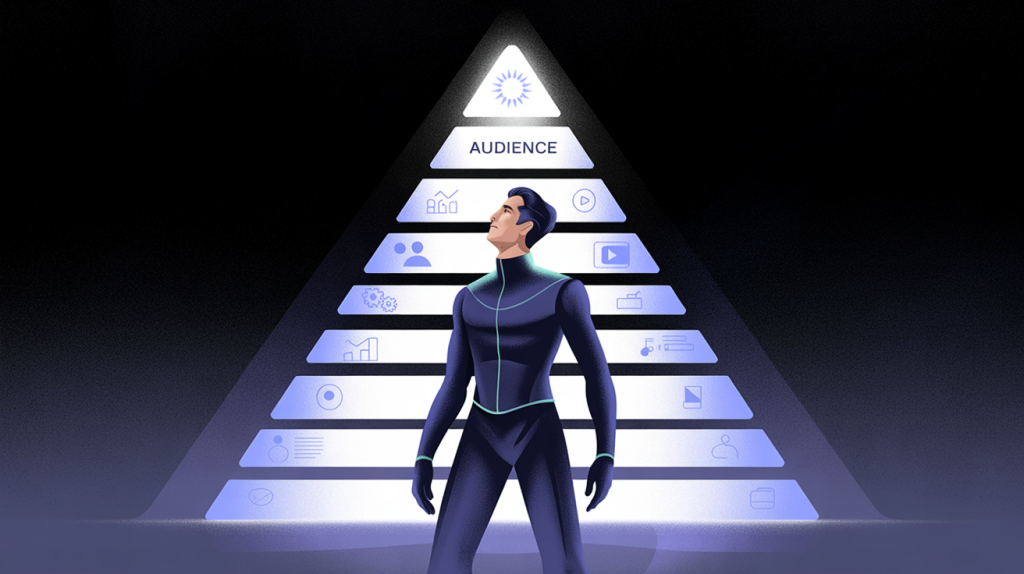Let’s get one thing straight: In a world of fast-scrolling, dopamine-addicting Reels, a lot of people think carousels are toast. They believe if your content isn’t a 5-second dance trend, it’s not even worth posting.
They’re wrong.
While everyone else is busy chasing the latest audio trend and praying to the algorithm gods, smart creators are quietly building empires with carousels. Why?
Because Reels get you views, but carousels get you fans. They get you saves, and they build authority. They’re a place for you to actually teach, guide, and connect with your audience on a deeper level.
If you want to move beyond just vanity metrics and actually build a business, carousels are your secret weapon. But not just any carousel. We’re talking about carousels built with a purpose—a set of rules that practically force the algorithm to show your content to more people.
In this guide, we’re going to break down the 10 vital carousel rules. These aren’t just tips; they are the proven frameworks that will help you create posts that grow your following and turn followers into paying customers.
Ready to start creating content that actually works? Let’s dive in.
The Almighty Hook (Rules 1-3)
Let’s be honest, your audience scrolls with the attention span of a goldfish. In fact, a study by Microsoft found it’s even shorter now—just 8 seconds. Your number one mission is to make them stop. It’s not about getting a like or a follow yet. It’s about getting a single swipe. If you can’t nail the hook, none of the other rules matter.
Rule #1: The Curiosity Hook
You know how your brain gets all tingly when you see a headline like, “The #1 Thing Most Creators Are Doing WRONG on Instagram”? That’s a curiosity hook at work. It’s an open loop your brain just has to close. Your mission is to make your audience feel like they’re missing out on some juicy secret.
Forget boring, generic titles. Use a question. Make a bold claim. Hint at a surprising discovery. Start with a statement that challenges what people think they know. Your first slide isn’t just a title—it’s a promise of a solution, and it’s the only way to get them to the next slide.
Rule #2: The Problem-Solver Title
If the curiosity hook is the intrigue, the problem-solver hook is the empathy. You need to show your audience that you understand their struggle. Are they tired of posting every day with zero results? Are they frustrated with the algorithm? Your title needs to scream, “I know your pain, and I have the answer.”

For example, instead of a title like “How to Get More Engagement,” try something like: “Still Getting Zero Comments? Here’s How to Fix It.” You’re not just offering a solution; you’re confirming their frustration, which makes them feel seen and heard. This builds an immediate connection and makes them hungry for what you have to say.
Rule #3: The Visual Bait
This rule is simple, yet it’s where most people fail. The visuals on your first slide must be an extension of your title. If your title says “How to Go Viral,” your design should look high-energy, with bold typography and maybe an eye-catching graph or icon. If your title is “5 Money Habits That Made Me a Millionaire,” the visual should look clean, professional, and aspirational.
Your first slide should be a visual preview of the value inside. It’s the first impression, the click-bait that isn’t really bait because you’re actually going to deliver on the promise. Use high-contrast colors, clean designs, and visuals that grab attention and align perfectly with your message.
The Core Value Dump (Rules 4-7)
So, you’ve hooked ’em with a killer first slide. They swiped. Congrats. But now comes the real test: Are you going to deliver the goods? This is where you prove you’re not just another content creator with a flashy thumbnail. This is where you build trust and become an authority.
Rule #4: The Single Idea Per Slide
Think of each slide as a single thought bubble. Nothing more. Trying to cram a paragraph of text onto one slide is a recipe for disaster. It’s a visual mess and it’s a guaranteed way to make your audience feel overwhelmed and swipe away.
Your job is to keep things clean. Use one bold headline, a concise supporting sentence or two, and maybe an icon or a simple graphic. This keeps the information digestible and helps people actually absorb what you’re trying to teach them.
Rule #5: The Narrative Flow
The best carousels aren’t just a random collection of tips; they tell a story. You need a clear progression from one slide to the next. The slides should logically build on each other, guiding your audience on a journey from “Problem” to “Solution.”
Think of it like a mini-book. You wouldn’t skip chapters, would you? Your audience shouldn’t have to either. Every single slide should feel like a natural next step, pulling them closer to the conclusion.

Rule #6: The Drip, Drip, Drip
This is the secret sauce. You’re not just giving away information; you’re using the AIDA framework: Attention, Interest, Desire, Action. You grab their Attention with the hook. You build Interest with valuable insights. You create Desire by showing them what’s possible. And finally, you give them a clear Action to take. Each swipe should be a drip of value that builds anticipation for the next. This isn’t just content creation; it’s a psychological strategy to keep them engaged.
Rule #7: The Pro-Level Design
Your design tells a story, too. It builds trust and credibility. It’s the difference between looking like a pro and looking like an amateur. This doesn’t mean you need to be a graphic designer. It just means being intentional. Use the same fonts and colors from your brand. Make sure your text is easy to read. Use plenty of white space. A clean, consistent design makes your content feel more valuable and professional, which makes people more likely to take your advice and follow you.
The Call-to-Action Arsenal (Rules 8-10)
You’ve got their attention, you’ve delivered value, and you’ve built trust. This is the moment of truth. What do you want them to do? The last few slides are your most important real estate. This isn’t where you get lazy; this is where you seal the deal and get the algorithm to work for you.
Rule #8: The Unmissable CTA
Look, you can have the most epic carousel in the world, but if you don’t tell people what to do next, you’re leaving money on the table. A great carousel doesn’t just inform; it inspires action.
Your final slide needs to have one, and only one, clear call to action. Is it to follow you for more? Is it to check out the link in your bio? Is it to save the post for later? Whatever it is, make it obvious and unmissable. Don’t make your audience guess.
Rule #9: The Engagement Multiplier
The Instagram algorithm loves one thing more than anything else: engagement. But not just any engagement—it loves saves and shares. When someone saves your post, it tells Instagram, “This is valuable content that people want to come back to.”

When they share it, it tells the algorithm, “This is so good, people are willing to share it with their own network.” Your CTA should be a trigger for these actions. Use phrases like, “Save this post for later,” “Share this with a friend who needs it,” or, “Comment ‘GUIDE’ to get my free checklist.” This not only boosts your engagement but also gives the algorithm the exact signals it’s looking for.
Rule #10: The Hidden Power of Captions
Your carousel caption isn’t just a place to write a few words; it’s a strategic extension of your content. You can use it to expand on the points you made in your slides, provide extra context, or tell a personal story.
This is a great place to build a deeper connection with your audience. Think of your caption as the follow-up conversation. It reinforces your authority and gives you another chance to drive action. Use line breaks and emojis to make it easy to read, and always end with a powerful question or a call to action that encourages a comment.
Your New Carousel Game Plan
So there you have it. You’ve now got the entire framework for creating carousels that don’t just get views—they build a loyal, engaged audience and, ultimately, grow your business. This isn’t just about making your posts look pretty; it’s about using proven psychological triggers to get people to stop, swipe, and act.
Forget about chasing viral trends or begging for likes. The real game is in providing massive value, and carousels are the perfect format for that. You now know how to craft a magnetic hook, deliver your value in bite-sized chunks, and end with a call to action that gets results.
Don’t just read these rules. Apply them. Go back to your content calendar and pick one idea. Create a carousel using what you’ve learned here. Focus on the hook, the flow, and the CTA.
Then, here’s a challenge: come back and comment on this article. Tell me which of the 10 rules made the biggest difference for you.
Now, go out there and start creating content that actually works.

